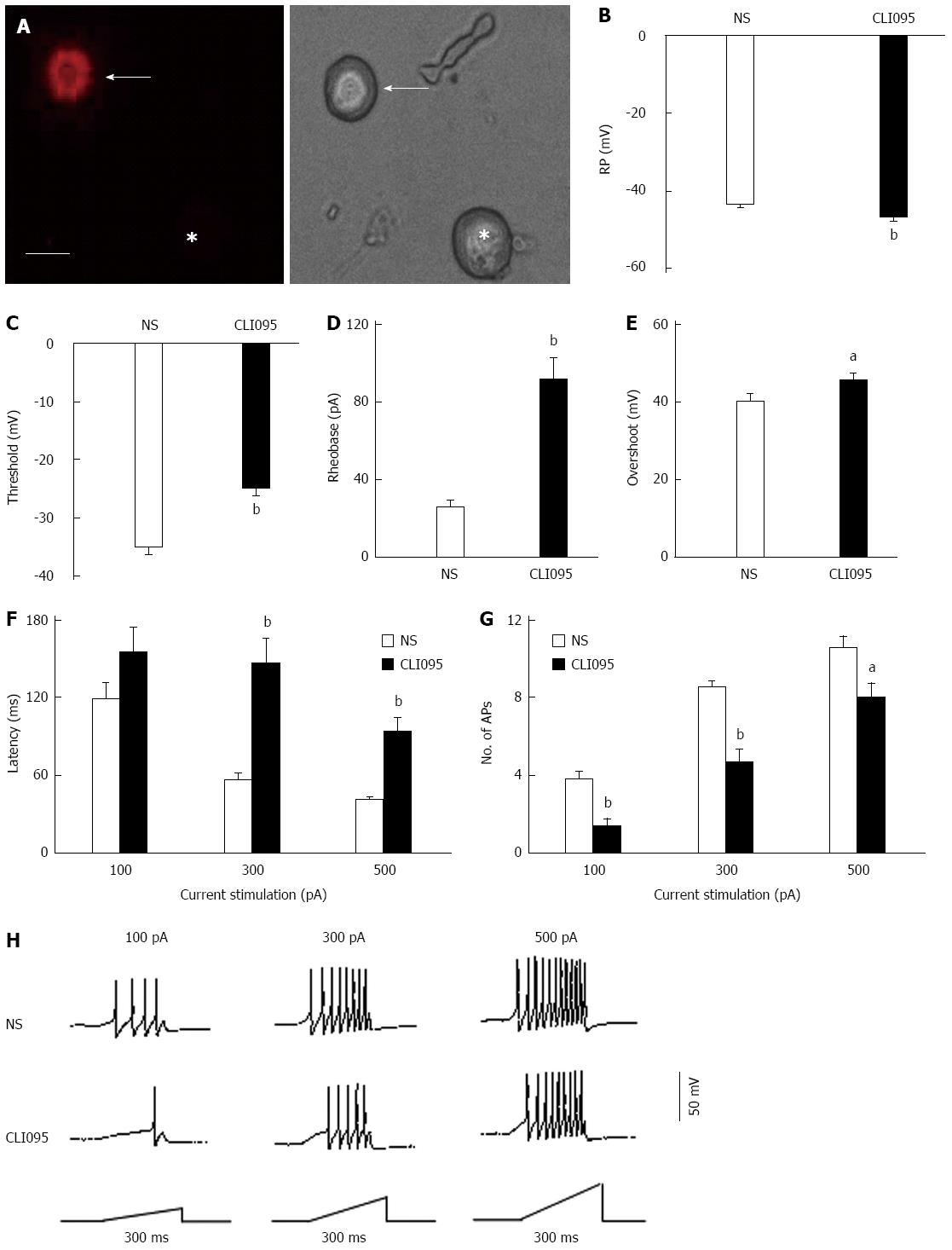Copyright
©The Author(s) 2015.
World J Gastroenterol. Jul 28, 2015; 21(28): 8615-8628
Published online Jul 28, 2015. doi: 10.3748/wjg.v21.i28.8615
Published online Jul 28, 2015. doi: 10.3748/wjg.v21.i28.8615
Figure 4 Toll-like receptor 4 inhibition reduces the hyperexcitability of dorsal root ganglion neurons innervating the colon.
A: DiI fluorescence (left) and bright-field (right), images of acutely dissociated DRG neurons. Colon-specific neurons are shown in red in the DiI-fluorescence image; B: The administration of CLI095 significantly hyperpolarized the RP of colon-related neurons (bP < 0.01, vs NS); C: CLI095 treatment notably depolarized the AP threshold (bP < 0.01, vs NS); D: CLI095 also markedly increased rheobase (bP < 0.01, vs NS); E: CLI095 also significantly increased overshoot (aP < 0.05, vs NS); F: CLI095 treatment significantly increased the response latencies to stimulation with 300 and 500 pA current ramps (aP < 0.05, vs NS); G, H: CLI095 greatly decreased the number of APs evoked by 100, 300 and 500 pA current ramps (100 pA, bP < 0.01, vs NS, two-sample t-test; 300 pA, bP < 0.01 vs NS, two-sample t-test; 500 pA, aP < 0.05, vs NS, two-sample t-test). Bar = 50 μm. DRG: Dorsal root ganglion; NS: Normal saline; RP: Resting membrane potential; AP: Action potential.
- Citation: Yuan B, Tang WH, Lu LJ, Zhou Y, Zhu HY, Zhou YL, Zhang HH, Hu CY, Xu GY. TLR4 upregulates CBS expression through NF-κB activation in a rat model of irritable bowel syndrome with chronic visceral hypersensitivity. World J Gastroenterol 2015; 21(28): 8615-8628
- URL: https://www.wjgnet.com/1007-9327/full/v21/i28/8615.htm
- DOI: https://dx.doi.org/10.3748/wjg.v21.i28.8615









